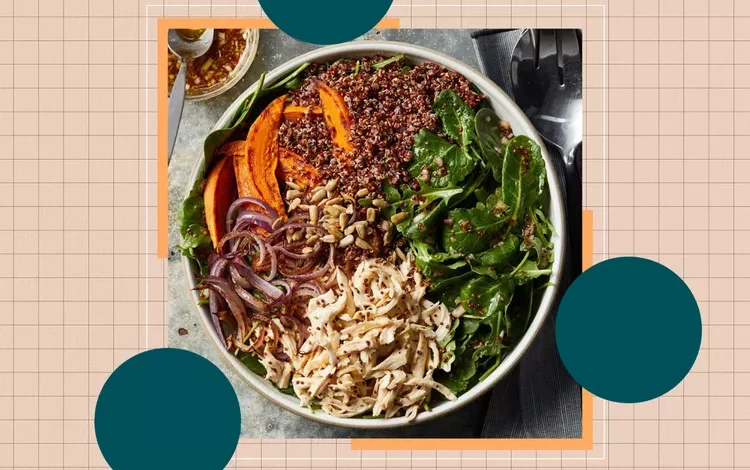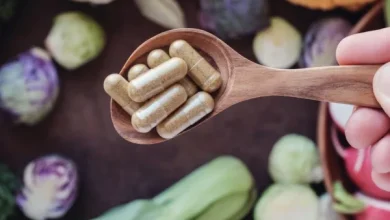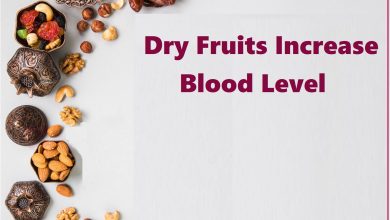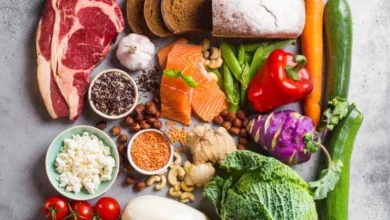7 Carbs with More Fiber Than Brown Rice, According to Dietitians
Looking to boost your fiber intake? Go beyond brown rice with these carbs that pack more fiber per serving.

Want to eat more fiber but are sick of brown rice? You can consume a wide variety of other carbohydrates and still reap the same health advantages. With seven more fiber-dense than brown rice carbohydrates, dietitians have recommended them to break up meal monotony.
Health Benefits of Fiber
Numerous health advantages come with a diet high in fiber. According to registered dietitian and Dietitian Insights spokeswoman Sheri Gaw, RDN, CDCES, “a diet that includes plenty of fiber from fruits, vegetables, whole grains, beans, nuts, and seeds is associated with a lower risk of diabetes, heart disease, immune disorders, and some types of cancer.”
The vitamin performs a number of extremely amazing bodily functions. Fiber helps keep us regular and gets rid of waste by sweeping through the system like a broom. In order to enhance heart health, it can even assist prevent cholesterol from being absorbed, according to dietitian Rhyan Geiger, RDN, of Phoenix. Additionally, because fiber takes longer to digest, it promotes stable blood sugar levels and enhances feelings of fullness, both of which may help maintain a healthy weight.
7 Carbs with More Fiber Than Brown Rice
There are roughly 2 grams of fiber in a half-cup portion of brown rice. The following foods have more fiber per half-cup serving than others.
1. Sweet Potato
For every 1/2 cup portion of mashed sweet potatoes, there are 4 grams of fiber, making them a starchy and nutritious vegetable. “They have a lot of fiber, antioxidants, and other health benefits that help to stop cancer, inflammation, oxidation, and nerve damage,” explains Gaw. In addition, bioactive substances found in sweet potatoes include carotenoids, an antioxidant that helps lower the incidence of degenerative and chronic illnesses.
Clinical Evidence of the Benefits of Phytonutrients in Human Healthcare, Monjotin N, Amiot MJ, Fleurentin J, Morel JM, Raynal S. In 2022, Nutrients, 14(9):1712. released on April 20, 2022. doi:10.3390/nu14091712
“You can double your fiber intake by substituting sweet potatoes for equal amounts of brown rice in soups, stews, salads, and side dishes,” suggests Gaw. For ideas on how to eat them, see our list of the 20 Most Well-liked Sweet Potato Recipes Ever.
2. Barley
Compared to brown rice, barley is a complete grain with a nutty flavor and higher fiber content. A portion of cooked barley that is 1/2 cup has 3 g of fiber. According to Gaw, “beta-glucan, a viscous form of soluble fiber found in barley, helps trap LDL cholesterol and prevent reabsorption during digestion.” According to one review, the fiber in barley may help lessen the rise in blood sugar after eating in addition to lowering cholesterol. Additionally, barley’s phytonutrients can assist in maintaining a healthy gut microbiota.
3. Quinoa
Compared to brown rice, quinoa is a complete grain that has more fiber and protein. According to Gaw, “quinoa is regarded as a gluten-free whole grain and a complete source of protein, even though it is technically a seed.” About 2.6 g of fiber can be found in a half-cup serving of cooked quinoa.
Quinoa contains a lot of bioactive chemicals that have anti-inflammatory and anti-cancer effects in addition to fiber. Gaw recommends substituting it for brown rice in salads, stir-fries, soups, stews, and casseroles.
4. Buckwheat
“Buckwheat, a technically seed but surprisingly gluten-free grain, takes about the same amount of time to prepare and has more fiber than brown rice,” notes Geiger. Approximate fiber content of cooked buckwheat is 2.3 g per 1/2-cup serving.9 Moreover, buckwheat flour has four times more fiber than regular white flour.
Buckwheat is a good source of the antioxidant flavonoids quercetin and rutin, which have been shown to lower inflammation. Buckwheat may have neuroprotective, anti-diabetic, and anti-hypertensive properties, among other health advantages.
For lunch or dinner, substitute buckwheat for brown rice, or try these gluten-free, nutty, earthy Buckwheat Pancakes, which come with 9 g of fiber per dish.
5. Green Peas
At 4.5 g per half-cup cooked serving, green peas are a starchy vegetable high in soluble and insoluble fiber. By giving stools more volume and accelerating their transit time, insoluble fiber facilitates a healthy digestive system and makes feces easier to pass. Soluble fiber, found in large amounts in peas, produces a gel-like substance that reduces inflammation, blood sugar, and cholesterol. We adore this dish for Quinoa with Peas & Lemon, which mixes two meals that are strong in fiber.
6. Whole-Wheat Pasta
Changing to whole-wheat pasta from refined spaghetti can help you consume more fiber. The amount of fiber in a half-cup of cooked whole-wheat pasta is marginally higher than 2 g.
Furthermore, compared to refined grains, whole grains have higher levels of vitamins and minerals. Use this spaghetti for cold pasta salad recipes or warm pasta dishes. Do you believe that whole-wheat spaghetti isn’t to your taste? Try again with one of these genuinely delicious 30-minute whole wheat pasta recipes.
7. Black Beans
In addition, legumes provide more dietary fiber per serving than brown rice. About 9 g of fiber may be found in 1/2 cup of canned black beans. Legumes are a part of a balanced diet that lowers the risk of type 2 diabetes, hypertension, and other inflammatory diseases. For inspiration on how to incorporate them into your meals, see our collection of Healthy Black Bean Recipes.
The Bottom Line
Beyond brown rice, there are many other ways to enhance your intake of fiber. Sweet potatoes, barley, quinoa, buckwheat, green peas, whole-wheat pasta, and black beans are just a few examples of the many health advantages of a high-fiber diet. Consuming more fiber doesn’t have to be monotonous, after all!




